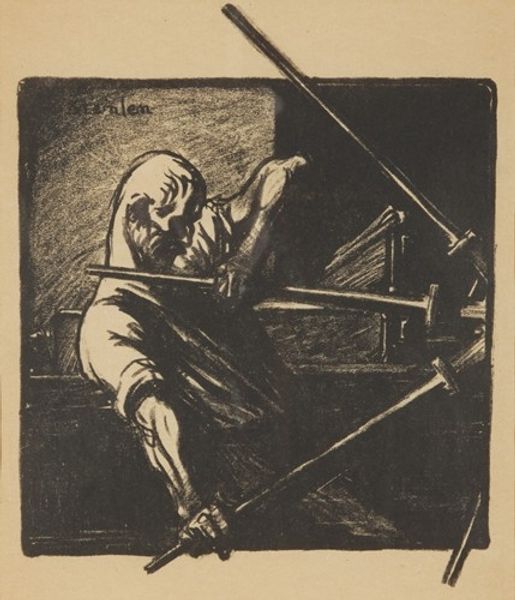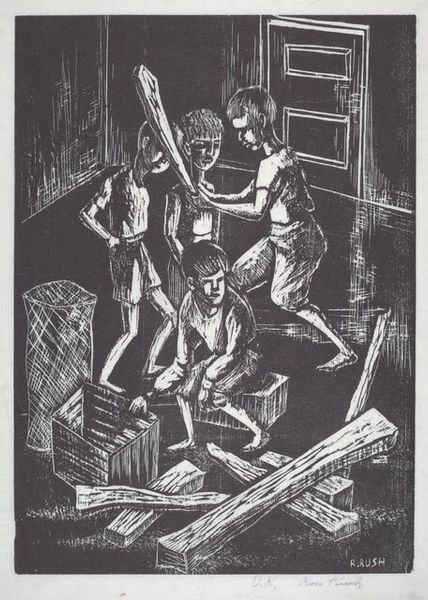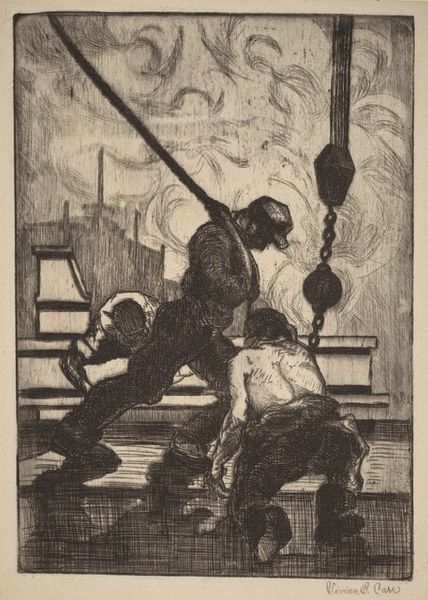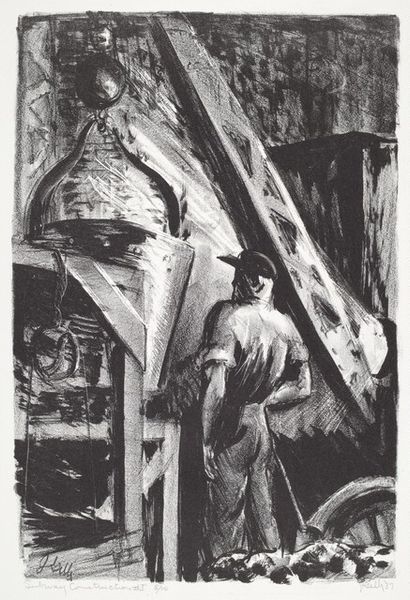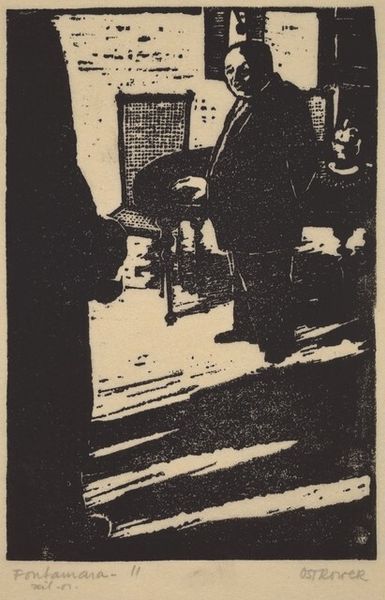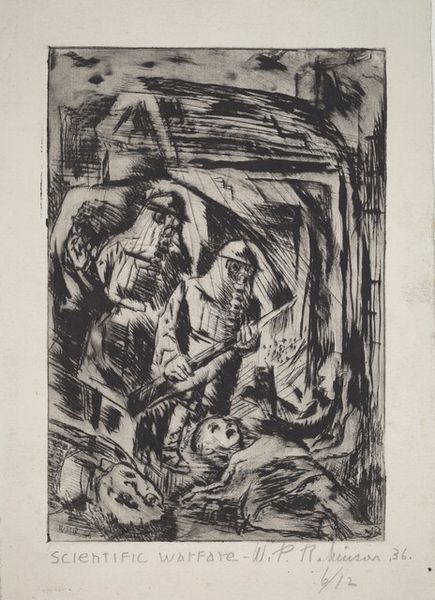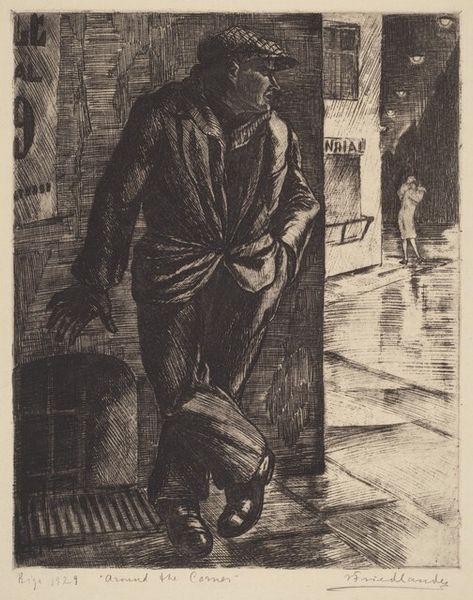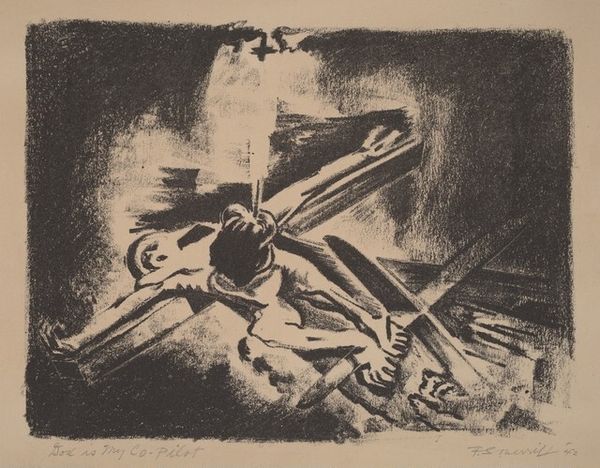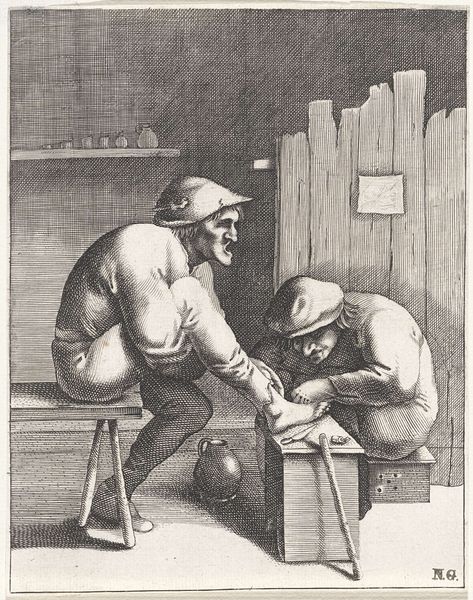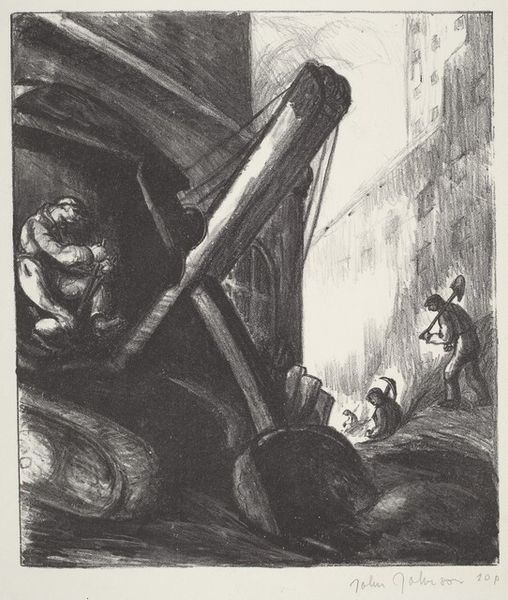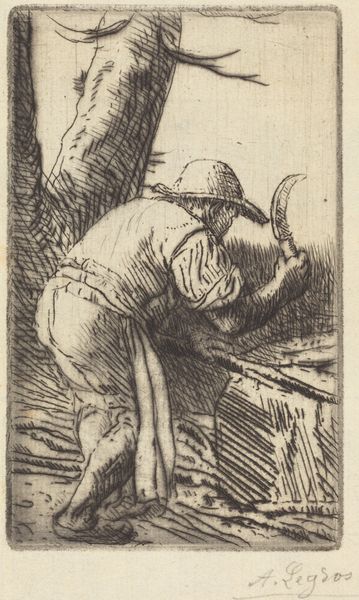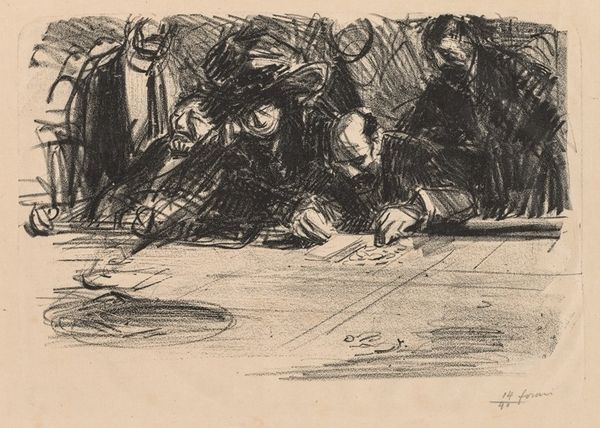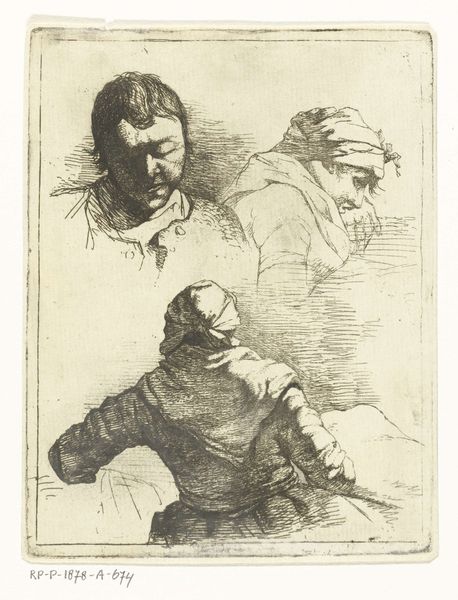
print, etching
# print
#
etching
#
figuration
#
social-realism
#
group-portraits
#
history-painting
#
modernism
#
realism
Dimensions: Image: 292 x 229 mm Sheet: 435 x 311 mm
Copyright: National Gallery of Art: CC0 1.0
Editor: This is James Penney’s “Workers, Radio City” from the early 1930s. It’s an etching, and I'm struck by how the dense linework conveys a sense of physical exertion. The angles are all skewed, making it feel off-balance. What catches your eye in this print? Curator: The composition hinges on the interplay of light and shadow, wouldn't you agree? Note the way Penney employs cross-hatching to sculpt the figures and delineate the architectural space. This lends the print a palpable depth and volume. The stark contrasts serve not only to model the forms but also to emphasize the texture of the materials, be it the rough-hewn wood or the workers' clothing. Editor: Yes, I see that now. The way he builds up the shadows is really effective. Is there any specific theory that helps explain why this piece works so well? Curator: We can apply Gestalt principles to appreciate its visual coherence. The law of closure, for instance, is evident in how our minds complete the partially rendered forms. Notice how our gaze is directed by the converging lines towards a vanishing point beyond the workers, creating a sense of spatial recession and guiding us through the scene. Editor: So the composition isn’t just representational, it’s also creating a specific viewing experience through these formal relationships. Curator: Precisely. By focusing on the formal elements, we can understand how Penney uses the language of art to create meaning. Semiotics might also offer insights into the symbolic potential of the image’s elements. Consider the hammer, the stairs, the "DANGER" sign; what could these signify within the overall structure of the piece? Editor: That's given me a lot to think about – looking beyond the immediate subject matter to consider how form and structure contribute to the overall impact of the work. Thanks! Curator: Indeed. Art, at its essence, is a formal language, and understanding its grammar opens up entirely new avenues of interpretation.
Comments
No comments
Be the first to comment and join the conversation on the ultimate creative platform.
